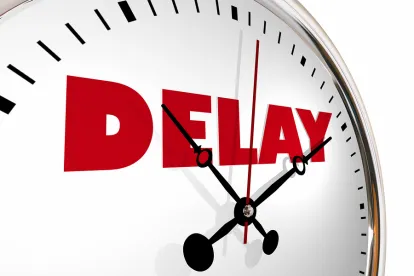In a case of first impression, a Court of Appeals has held that a government subcontractor’s claim for reimbursement of its actual indirect costs was time-barred. Fluor Fed’l Solns. LLC v. PAE Applied Techs, LLC, No. 17-1468, 2018 WL 1768233 (4th Cir. Apr. 12, 2018) (per curiam) (unpublished). It is the first case to directly address the interplay between the Allowable Cost and Payment Clause of the Federal Acquisition Regulation (“FAR”), 48 C.F.R. § 52.216-7, and a statute of limitations. It highlights the risks government subcontractors face when they choose to wait for a Government audit rather than litigate promptly after a payment dispute arises.
Factual Background
The case involved a long-term subcontract and a long-delayed government audit. In 2002, Fluor and PAE entered into a federal government subcontract that ultimately spanned a 15-year performance period. The subcontract incorporated, with minor changes, the FAR Allowable Cost and Payment Clause, 48 C.F.R. § 52.216-7, found in most cost-reimbursable federal government contracts and subcontracts. That clause requires the Government (or, in this case, the prime contractor, PAE), to pay Fluor’s “anticipated final” indirect rates in accordance with the contract terms, subject to retroactive adjustments once a government audit establishes the subcontractor’s final indirect rates applicable to the contract. 48 C.F.R. § 52.216-7(e)–7(g).
Beginning in 2004, Flour began sending invoices to PAE reflecting Fluor’s anticipated final general and administrative (“G&A”) rates. PAE refused to pay more than a 2.3% G&A rate, contending that the parties had agreed in the subcontract to a 2.3% G&A rate cap. Because of a government audit backlog, the Government never established Fluor’s relevant final G&A rates until 2015, but concluded then that Fluor’s rates had been much higher than 2.3%.
District Court Litigation
Fluor sued PAE in 2016 in the U.S. District Court for the Eastern District of Virginia, seeking millions of dollars representing the difference between Fluor’s subcontract costs calculated at the final audited G&A rates and the costs calculated at the 2.3% rate PAE had paid. PAE responded that the parties had agreed to the 2.3% G&A cap and that the claims were time-barred under Virginia’s five-year statute of limitations for breach of contract. After a bench trial, the district court concluded that the parties had agreed to a 2.3% G&A cap and entered a judgment for PAE. Fluor appealed.
Fourth Circuit Opinion
The Fourth Circuit did not address whether Fluor and PAE had agreed to a 2.3% G&A cap, but rather affirmed the district court’s judgment because Fluor’s claims were time-barred. The court held that Fluor’s breach of contract claim accrued in 2004 when PAE first rejected Fluor’s invoices seeking more than a 2.3% G&A rate. If the first rejection was a breach of the subcontract, the court held, then each subsequent rejection was part of a “single continuous breach.” Thus, Fluor’s entire claim was barred by the Virginia five-year statute of limitations.
The Fourth Circuit directly addressed, and rejected, Fluor’s argument that its claim did not accrue until 2015 when the government audit established Fluor’s “final rates” for purposes of the FAR Allowable Cost and Payment Clause. The court pointed to the clause’s requirement that PAE pay Fluor’s invoices for “anticipated final rates” in accordance with the terms of the subcontract. If there was a subcontract breach for failure to pay more than a 2.3% G&A rate, the court concluded, “it accrued when PAE first refused to pay the anticipated final rates, not when the Government completed its audit years later.”
Key Takeaway
When disputes arise in the course of subcontract performance over payment of indirect rates, the subcontractor may be tempted to wait until a final audit before filing a claim for any underpayments. But the lesson of this Fourth Circuit decision is clear: the statute of limitations clock may start ticking with the first rejection of the subcontractor’s invoice.





 />i
/>i
